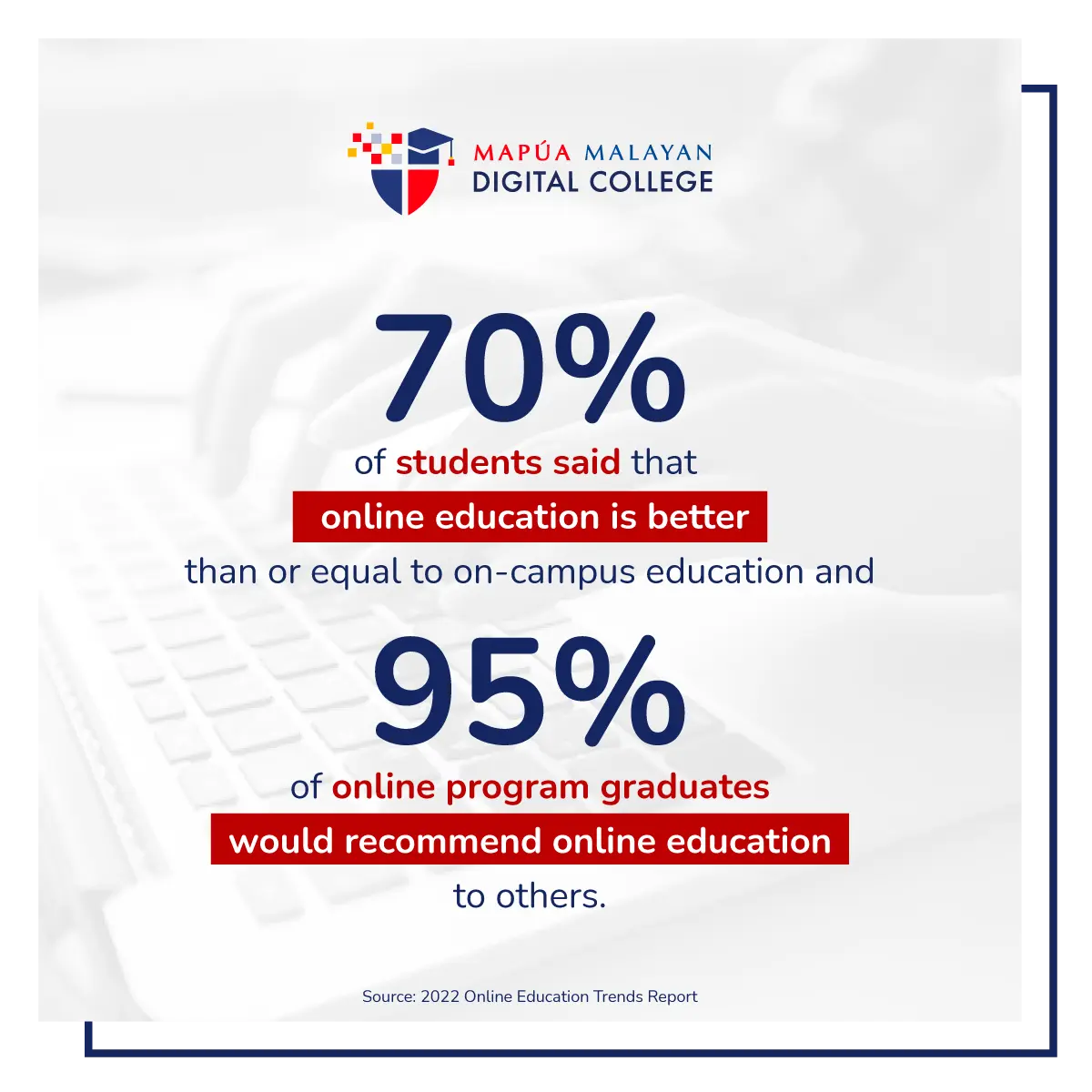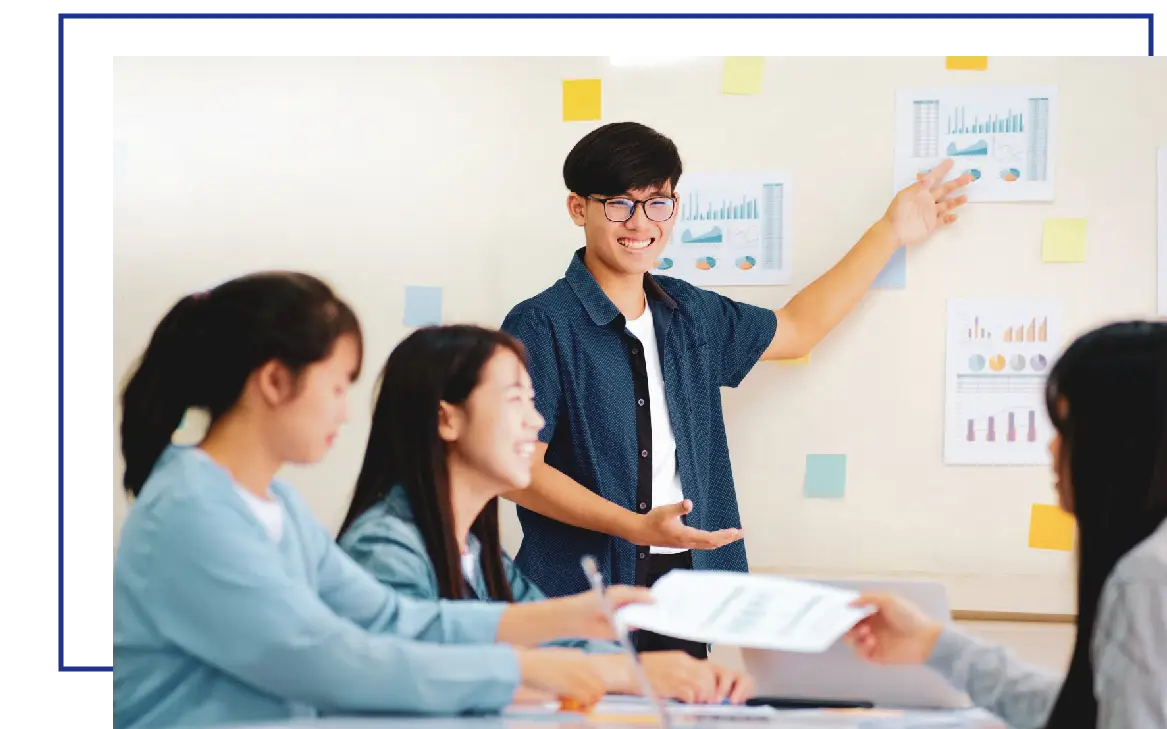Schools have followed a traditional or teacher-centered approach for decades, where students passively listen during lectures and answer when asked questions, then take exams to measure their comprehension. This focuses on the teacher as the main source of knowledge and asks students to spend countless hours memorizing concepts and terms. This can potentially lose sight of how students learn in different ways and instead put more emphasis on meeting academic standards.
 On the other hand, a student-centered approach considers the unique learning experience of each student and aims to develop soft skills they will need in the real world. Dr. Sarah Pazur, director of school leadership at Flextech High Schools,
says, “Student-centered learning mirrors what happens in life and the workplace; you have to set goals, take action, manage your time, reflect and revise, and have a belief in yourself that you can improve.”
On the other hand, a student-centered approach considers the unique learning experience of each student and aims to develop soft skills they will need in the real world. Dr. Sarah Pazur, director of school leadership at Flextech High Schools,
says, “Student-centered learning mirrors what happens in life and the workplace; you have to set goals, take action, manage your time, reflect and revise, and have a belief in yourself that you can improve.”
Given new technology, it is possible to effectively integrate the best practices of both approaches with hybrid learning and/or blended learning, thereby making it fit for a tech-savvy generation. Though it may take many years, lots of experimentation, and revisiting strategies and policies, Educational Technology or EdTech makes the transition possible despite the challenges that come with it.
Challenging the status quo

Though the EdTech industry has been making waves for decades, its growth accelerated during the global pandemic. Since it left a positive impact on students and teachers, schools have strategized to accommodate the shift. In a report for the European University Association, the European Higher Education Area aims to utilize digital learning to supplement traditional higher education instead of replacing the latter. This is a great example of how education providers can embrace innovation to meet the needs of their students instead of students conforming to a school’s structure in order to uphold conventional learning.
EdTech disrupts the status quo, yet creates new opportunities for schools to leverage on and provide a better learning experience.
Here are a few ways on how EdTech is revolutionizing education:
Enables effective personalized learning
Edtech allows teachers to meet students where they are and give the support that they need. Traditional education, in a sense, is a “one-size-fits-all” approach that has become outdated. Students nowadays are stimulated, and they learn differently. By using interactive videos, gamification, and artificial intelligence, students can stay engaged while enjoying the learning process.
Makes education less-location dependent
When students commute to and from school, it takes away their time and energy that could be spent on learning. There are also students who do not have the means to live closer to their school of choice so instead they choose to work or not attend school at all. Today, schools offer fully online classes and/or remote learning to make education widely accessible. They even include a provision for a laptop and a pocket WiFi should students need.
Offers flexible schedules and affordable fees
Working students and professionals who want to go back to school have the option to enroll at an online college. With online courses offering synchronous and asynchronous classes, students have control over their schedule and are more motivated to work and finish their college degree. Moreover, EdTech allows students to access their reading materials online, cutting down costs spent on textbooks as well as commuting and food allowance.
Equips students with digital skills
Immersing students in new technology in school not only develops their digital literacy skills needed for 21st-century careers, but also critical thinking, creativity, communication, and collaboration.
Saves teachers’ time and energy from administrative tasks
Preparing lesson plans, exams, and student evaluations takes a lot of time and effort. Using a Learning Management System (LMS) can provide schools and teachers the support they need to simplify tasks and focus on building rapport, engagement, and motivation in and out of class, as well as mentoring students and providing effective, personalized learning experiences.
Digital-first, future-ready: Online education is here to stay
The demand for online education is constantly growing and is pushing educational institutions around the world to seize the opportunity to innovate. Thankfully, the shift to earning a fully online degree is affordable and widely accessible as students are also offered flexible payment plans and easy enrollment processes. In the 2022 Online Education Trends Report,

“70% of students said that online education is better than or equal to on-campus education and 95% of online program graduates would recommend online education to others. Convenience and flexibility are the top reasons why students prefer online classes.”
A survey conducted by Mapúa Malayan Digital College (MMDC), the premier digital-first college in the Philippines, reported that 57% of their enrolled students are working students, who need online classes that allow them to balance other responsibilities and that are affordable. Most finance their own education and choose MMDC for their fully online classes, flexible schedules, the Asenso Scholarship Program, and their course offerings.
 MMDC, the premier digital-first college in the Philippines, offers courses that focus on the application of technology in businesses, which are highly sought after by students and employers, with 7.5 hours of synchronous sessions per week plus asynchronous sessions that students can take at their own pace. Following the Projects, Problems, and Cases (PPC) learning model, students who enroll in their programs will focus on competency development rather than knowledge acquisition; and develop technical, analytical, creative, and leadership skills to prepare themselves as they join the modern workforce.
MMDC, the premier digital-first college in the Philippines, offers courses that focus on the application of technology in businesses, which are highly sought after by students and employers, with 7.5 hours of synchronous sessions per week plus asynchronous sessions that students can take at their own pace. Following the Projects, Problems, and Cases (PPC) learning model, students who enroll in their programs will focus on competency development rather than knowledge acquisition; and develop technical, analytical, creative, and leadership skills to prepare themselves as they join the modern workforce.
According to the World Economic Forum, critical thinking and problem-solving top the list of skills that employers believe will grow in two years time. This addresses the concerns of senior high school students who are looking for a reputable school at an affordable price, for flexible schedules to balance school and social life, and for a degree that will get them the career that they want.
In the Philippines, online higher education is available and growing. Though not yet at the same degree as other countries who have fully digitized programs, schools such as MMDC are taking the necessary steps to deliver a purposeful learning experience without compromising the quality of education.
MMDC offers partnerships and scholarship opportunities to expand their reach and achieve their goal of making education more accessible to anyone with the willingness to learn. Visit this page to learn more about the scholarships offered by MMDC, including the application process and deadlines.
Companies, LGUs, and other organizations who are seeking for digital education and upskilling opportunities for its employees, constituents, and members may explore partnerships with MMDC. Please contact jvillanueva@mmdc.mcl.edu.ph for more information.
To learn more about MMDC and their programs, visit https://www.mmdc.mcl.edu.ph/. Follow us on Facebook , Twitter, Instagram and YouTube.


